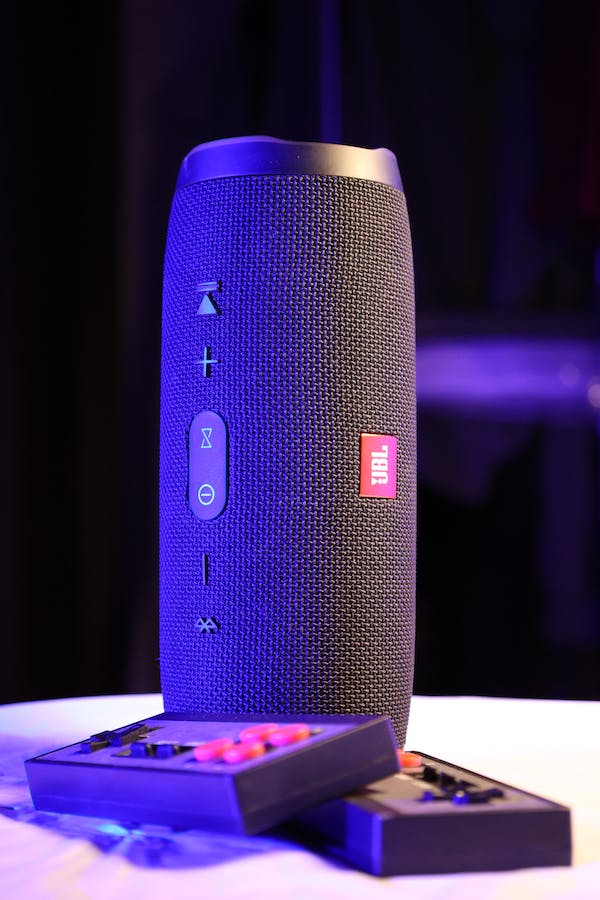Making professional-looking videos is a growing trend nowadays, but to achieve a polished look, stability is everything. Whether you’re a seasoned videographer or new to the world of content creation, shaky footage can ruin your content’s quality. Fortunately, invest in a tripod to achieve stability in your content creation. A tripod can provide a steady camera setup, avoid shaky footage, and enable you to capture dynamic footage on the move. Keep reading to know more about the benefits it will provide you.
A Steady Set-Up
It is no secret that shaky footage can make your content look cheesy. However, a tripod can effectively eliminate handshake from your videos. Tripods come in various materials such as aluminium, carbon fibre, and stainless steel. Depending on what you need for your footage, choose the best material that can provide you with maximum stability. Tripods can also offer you different types of leg designs in case you encounter an uneven surface. Be sure to get one that can provide you with maximum stability over any surface.
Adjustable Height
The height of your camera in your video shoots is a crucial factor in getting your content’s perspective and angle right. A tripod with adjustable height would be helpful in changing the camera angle from low-angle shots to high-angle shots. When it comes to vlogging, it’s essential to be yourself all the time, so make sure that you get a tripod that can keep up with your content creation style.
Portability
Believe it or not, portability should also be an essential factor in choosing tripods. You may need to carry your tripod around, so you want something lightweight and easy to fold up because the best camera is the one that you have with you. Find a tripod that complements your style, so you don’t end up carrying a burden all the time.
Versatile Positioning
There is more to a tripod than setting up your camera on a stationary shot. A ball head is considered an essential feature for a tripod. This type of head allows for easy and versatile positioning, making it perfect for all kinds of shot angles. This feature allows you to position the camera in any direction, so your shots are not limited by a bad angle. You’ll enjoy a flexible time on your shoots and get the best content out there.
Capturing Dynamic Footage
Tripods give you stability, but that doesn’t mean you’re limited to stationary shots. With your tripod in hand, you can take dynamic video footage while on the move. This shot can provide the viewer with varying perspectives, like walking around a scene, without the shaky movements. This type of shot will allow your viewers to immerse themselves in the moment and will help them feel as though they were part of the action.
Conclusion:
Nowadays, if you want your content to stand out, your equipment has to match your passion. A tripod may not be the most glamorous piece of equipment, but its benefits are game-changing. It is essential in creating professional-looking videos and achieving stability in your content. It provides a steady set-up, adjustable height, portability, versatile positioning, and dynamic footages. So, if you’re thinking of making a career in videography or just want to up your videography game, now’s the time to invest in a tripod. It will be a game-changer and one of the best investments in your videography career.
Gone are the days where classrooms were modeled on a ‘one size fits all’ approach to teaching and learning. Thanks to advancements in technology, today’s students are benefiting from a more tailored approach to education that recognizes that each student learns differently. Personalized learning has become the cornerstone of education, a dynamic that is transforming the education landscape.
In recent years, adaptive learning platforms, AI-driven educational software, and personalized learning apps have revolutionized the traditional learning process. No longer are students forced to conform to a single learning style, instead technology is now being used to analyze individual student progress and adapt the curriculum to meet their specific needs. The result is not only an enhanced and more enjoyable learning experience but also one that addresses the diverse learning styles and paces of students. Let’s delve deeper into how technology is making this possible.
The first way technology is revolutionizing the education sector is through adaptive learning. Adaptive learning systems use intelligent algorithms that can analyze student’s performance data, and tailor an educational experience uniquely suited to the student based on their strengths, weaknesses, and learning preferences. This technology allows educators to create a customized path for each student, which is a significant departure from the traditional classroom where teachers follow a standardized curriculum designed for the average student.
The second way is through AI-driven educational software. AI systems have the ability to recognize when students are struggling with a concept or idea. Through AI education software, the system can offer custom-tailored instruction and adaptive learning opportunities. This technology enables students to learn at their own pace and in a way that suits their particular learning style, which makes education more meaningful.
The third way is through personalized learning apps. These learning apps use personalized data, which is an essential area of education technology. It enables comprehensive profiles to be created of each student’s academic skill levels, extracurricular activities, interests, learning styles, and learning challenges. The app is then used to provide personalized content and experiences for each student. This technology helps educational institutions to save time, reduce costs, and increase their student retention rates significantly.
The fourth way is through gamification. Gamification of learning means introducing the game-like mechanics of point scoring, competition, collaboration, and personalization into educational software. Gamification can be used to improve knowledge retention and long-term engagement. Additionally, because learners engage in gamified content more frequently, personal data such as learning styles, interests, and skills can be precisely analyzed to provide personalized instruction. Gamification technology plays a critical role in supporting the personalization of education because it keeps students interested in learning in a fun way.
In conclusion, technology is dramatically changing the education sector by bringing personalization to the forefront. The four key ways highlighted in this blog post – adaptive learning, AI-driven educational software, personalized learning apps, and gamification – are contributing to a more engaging and effective learning experience. It has allowed educators to shift from a one-size-fits-all approach to a customized approach based on each student’s unique needs and learning pace. With technology continuing to evolve at a breakneck speed, it’s exciting to think about the possibilities that await us in the future of personalized education.
Imagine a world where you don’t have to worry about tangled wires and cables – a world where you can effortlessly connect your devices and transfer data seamlessly. With the advancements in Bluetooth technology, that world is now a reality. Bluetooth devices offer a level of convenience that was once only a dream. In this blog post, we’ll dive deeper into the most significant development in Bluetooth technology – Bluetooth Low Energy (BLE) in version 4.0 – that revolutionized the way we stay connected.
First and foremost, Bluetooth Low Energy (BLE) technology consumes less power than previous iterations, making it the perfect communication solution for devices with limited battery capacity. It enables devices – such as smartwatches, fitness bands, and wireless headphones – to last weeks, if not months, without requiring frequent charging. Additionally, BLE technology’s ability to enable fast and reliable data transfer at low power consumption, makes it a go-to technology in various industries. BLE devices can use a coin cell battery that can be replaced easily after its depletion, meaning you don’t have to discard the entire device in the case of a dead battery.
In addition to its power efficiency, BLE has also enabled the widespread adoption of IoT (Internet of Things) technology. With BLE embedded in everyday devices, it is now possible to create connections between smartphones, wearables, and various other smart devices that make our daily life comfortable, simplified and more organized. IoT-connected devices, such as smart thermostats, smart locks, and smart lights, can be controlled through a single device like a smartphone or smart speaker, making our lives more convenient than ever before.
Using Bluetooth technology to connect your devices to each other opens up a world of possibilities. For instance, you can connect your wireless headphones to your smartphone or TV without any hassle. This means that you can enjoy your favorite music, movies, and shows without disturbing anyone around you. What’s more, you can also use your wireless headphones to answer calls without having to take your phone out of your pocket, making multitasking easier and safer, especially when driving.
Bluetooth technology has also gained popularity in the medical industry. Bluetooth Low Energy devices can monitor body functions, such as blood glucose levels, heart rate, and body temperature. Patients can easily link their medical wearable devices with their smartphone or tablet, enabling them to track their health conditions and share reports with their doctors in real-time.
In conclusion, the Bluetooth Low Energy technology has revolutionized the way we stay connected. With its low power consumption, we can power small devices that serve different purposes for extended periods. The widespread adoption of IoT technology has created an ecosystem of connected devices, making our lives simple, convenient, and organized. Moreover, we can now link our medical devices with smartphones, making it possible to monitor our health conditions and share reports with our doctors in real-time. Bluetooth technology has certainly made our lives easier, and its advancements are something to watch for in the future.
The world of electronics has seen rapid development in recent years, and the future holds even more promise. The continued growth of artificial intelligence, quantum computing and nanotechnology are already fundamentally changing the way we live our lives, and their integration further into our daily routine promises to push these limits even further. From refrigerators that can order groceries, to wearable tech that monitors our health – the potential impact is hard to measure, but one thing is for sure – the world of electronics is constantly expanding, and it’s not slowing down anytime soon.
The rise of smart cities is one example of the impact of technology on the world around us. By incorporating electronics into the way we live our lives, cities can become more efficient, safer and more comfortable to live in. Traffic flow can be monitored in real time, making roads safer and less congested, while energy consumption can be optimized to make our homes and workplaces more environmentally friendly. The possibilities are limited only by our imagination.
The development of wearable technology is another area where electronics have made significant progress in recent years. From smart watches and fitness trackers to augmented reality glasses, we are now able to monitor and track our health, stay connected to the world around us and access information in ways that we never thought possible. In the future, we may even see neural implants that enhance our cognitive abilities or devices that translate our thoughts into words.
The rise of quantum computing and artificial intelligence is already beginning to shape our world in ways that we have never seen before. From self-driving cars to personalized medical treatments, these technologies are already enabling us to solve complex problems that were previously impossible to tackle. In the future, we may even see the development of supercomputers that can rapidly solve problems that would take classical computers years to solve.
Nanotechnology is another area where electronics are making significant strides. Scientists are currently exploring ways in which tiny machines can be designed to move through our bodies and deliver targeted treatments to areas that need it most. This technology has the potential to revolutionize the healthcare industry, making it possible to treat diseases like cancer without the need for invasive surgeries.
It’s clear that the future of electronics is bright and promising. From smart cities to nanotechnology, the possibilities are endless. The impact of these technologies promises to improve our lives in ways that we can’t even imagine yet, and the only limitation is our imagination. As we continue to push the boundaries of what is possible, we are sure to witness some truly amazing things in the years to come – and who knows what the future holds. One thing is for sure – it’s going to be exciting!
Have you ever thought about the impact of miniature electronic devices on our daily lives? The transistor and the integrated circuit might sound like scientific jargon to you, but they have revolutionized our world in unimaginable ways. From the smartphones we use to the cars we drive, these devices have become an integral part of our lives. In this blog post, we will explore how the electronic revolution began and how it has changed the world as we know it.
The transistor was a pivotal invention that transformed the electronics industry. Prior to the transistor, vacuum tubes were used as electronic switches in devices such as radios and televisions. However, vacuum tubes were bulky, generated a lot of heat, and were prone to failure. In contrast, the transistor was compact, required minimal power, and was more reliable. This enabled the development of smaller and more efficient electronic devices that changed the way we live and work today.
In the late 1950s, the development of the integrated circuit (IC) further propelled the electronic revolution. The IC was a miniature electronic circuit that incorporated thousands of transistors on a single chip. This paved the way for the development of the first microprocessors, which led to the birth of modern computers. Today, computers have become an indispensable tool for communication, education, entertainment, and industry.
Beyond computers, the electronic revolution has transformed many industries through the development of miniature electronic devices. The medical industry, for instance, has benefited greatly from tiny electronic devices such as pacemakers, insulin pumps, and the like. These devices have saved countless lives and improved the quality of life for many people. Other industries like telecommunications, automotive, and aerospace have also been transformed by the electronic revolution.
The electronic revolution has also transformed the way we communicate. Smartphones have become ubiquitous and indispensable, enabling us to connect with each other anytime and anywhere. The internet has made knowledge and information accessible to everyone, enabling people to learn, collaborate, and innovate in unprecedented ways. Social media has also emerged as a powerful tool for communication and expression, connecting people from all over the world.
The electronic revolution has transformed the world in countless ways, from changing the way we work, communicate, and learn to improving our health and well-being. It has enabled us to achieve things that were once deemed impossible, and has paved the way for a brighter and more promising future. As we continue to innovate and develop new technologies, let us remember the humble beginnings of the electronic revolution, and the countless people who have contributed to its success. Let us continue to harness its power for the betterment of humanity.
Do you remember the feeling of frustration when your earphone cords become a tangled mess? Or how about the moment when you accidentally yank them out of your ears because of your arm movement? Well, those days are long gone, my friends! The birth of True Wireless Earbuds has revolutionized the way we listen to music, and it’s a game-changer. In this blog post, let’s delve into the popularity of true wireless earbuds and why they have become the next big thing in the audio world.
The Convenience Factor
The most apparent benefit of true wireless earbuds is the convenience it brings to our lives. No more tangled wires or bulky headphones that make it hard for us to move or do any activity. With true wireless earbuds, we can quickly grab them and go, enjoying music without any fuss. With the modern design of true wireless earbuds, we can wear them for hours without feeling any discomfort in our ears.
Better Sound Quality
True wireless earbuds also provide better sound quality than traditional wired earphones. With advancements in technology, true wireless earbuds offer high-quality audio and surround sound. This technology eliminates the need for wires and allows you to enjoy your music without interference, which results in excellent sound quality.
Compatibility with Smart Devices
Another reason for the rise of true wireless earbuds is its compatibility with smart devices, such as phones, tablets, and laptops. Some models of true wireless earbuds are even equipped with voice assistants, like Siri or Alexa, which enable you to control your music and phone calls without touching your phone. With its seamless integration with smart devices, it’s no wonder why true wireless earbuds become a go-to choice for many people.
Cost-Effective
Though true wireless earbuds were initially costly, they are now more affordable than ever before. With the recent demand for this technology, more manufacturers are producing various models and ranges of true wireless earbuds at competitive prices to satisfy the market. So if you’re on a tight budget, you can still find a pair of earbuds that will suit your audio needs without breaking your bank.
Fashionable and Stylish
Finally, true wireless earbuds are more than just an audio gadget; they are also fashionable and stylish. With various designs and colors available in the market, you can choose the earbuds that match your personality and sense of style. True wireless earbuds are also perfect for people who want to be discreet in public, as they blend in with their surroundings so well.
To sum it up, true wireless earbuds have revolutionized the way we listen to music, providing convenience, better sound quality, compatibility, affordability, and style. With its increasing popularity, it’s no wonder that true wireless earbuds are the future of audio. With so many benefits, it’s no surprise that many people are shifting to true wireless earbuds. So if you’re still struggling with tangled cords, maybe it’s time for you to invest in a pair of true wireless earbuds. Say goodbye to the hassle and hello to the sweet sound of music!
The world today is ruled by technological advancements, and with each passing day, we are introduced to something new and exciting. Insurmountable data is available at our fingertips, and we are constantly connected to each other. With the increase in quality of life, we strive to maintain our health and fitness, and technology has made that easier than ever before. The introduction of fitness tech has allowed people to access and personalize professional health and wellness protocols in the comfort of their own homes. In this blog post, we discuss the importance of fitness tech, how it has helped people, and why it’s important to stay on top of the latest technological trends.
Fitness tech has been instrumental in helping millions of people take control of their health. Technology has helped people through wearable fitness trackers and health monitoring devices that can track your heart rate, steps, calories burnt, and other vital metrics. By combining this with convenient smartphone apps, users can track their progress, set goals, and keep on top of their routines. This feedback system encourages users to stick to their routines and gain the confidence and focus that’s necessary for better fitness.
The health benefits are also immeasurable, including better physical health and mental well-being. Fitness tech reduces body fat, helps with weight loss, prevents heart diseases, and hypertension to name just a few. The apps that come with fitness tech are often designed to coach the users through workouts, and through gamified mechanisms, these apps can turn a mundane activity into an exciting challenge.
Fitness tech has made working out at home incredibly easy, and this has allowed people to maintain a consistent health routine without having to hit the gym. This minimizes travel costs and time, and offers people the freedom and comfort of working out whenever they want. You can fit in a quick workout session during your lunch break, or when watching TV, or even before going to bed!
Another advantage of fitness tech is its customizable nature. To cater to individual user needs, data is collected, analyzed and personalized workout routines are created. These routines are individually designed to best suit the users’ physical and mental schedules, ensuring that they address the specific needs of the users.
Fitness tech has revolutionized the way we maintain an active and healthy lifestyle. It offers a personalized health experience that encourages users to be fit, healthy, and confident. By using fitness tech wisely, you can take control of your health and well-being, while taking responsibility for your body and mind. So why wait? Check out some of the excellent fitness tech available right now and start today on your journey towards a healthier and happier version of yourself!
Artificial Intelligence (AI) is definitely one of the most disruptive and transformative technologies of the 21st century. Among the industries that have been significantly impacted by AI is electronics. From smartphones, smart homes, to self-driving cars, AI is playing a significant role. The ability of AI to learn and replicate cognitive functions generally associated with humans is fast-changing the way we interact with our environment and our daily life. In this blog post, we will take a look at how AI is steering the direction of electronics, transforming industries, and changing how we live our daily lives.
AI in Consumer Electronics
AI is becoming increasingly integrated with consumer electronic devices to enhance the user experience. Through AI technology, our devices can now enhance efficiency, provide personalized experiences, and improve security. Smartphones are now equipped with AI-powered features such as facial recognition, voice assistants, and fingerprint scanning. One of the leading consumer electronics to have AI-integrated features is the smart home. Smart home hubs such as Amazon Echo, Alexa, and Google Home are powered by AI that has helped manage the smart home effectively. For instance, you can now use voice commands to regulate the temperature, lighting, music, and even order groceries.
AI in Healthcare Electronics
The healthcare industry is also a significant beneficiary of the transformative power of AI. AI-powered healthcare devices are changing the industry outlook and impacting patients’ health outcomes. Medical practitioners are now using AI-powered electronic devices for quick and accurate diagnosis. AI-powered wearables such as ECG monitors, fitness trackers, smartwatches, and blood pressure monitors are used to track patients’ vital signs. These devices analyze the usage patterns and predict potential dangerous health conditions by tracking vital signs.
AI in Transportation
The transportation industry is one of the most impacted by the power of AI. Self-driving cars that operate with AI technology are gradually becoming a reality. Electric and hybrid cars are now equipped with AI technology to provide better fuel efficiency, predictive analysis and predictive maintenance, and overall automotive safety. Commercial vehicles such as trains and trucks will also be impacted with AI technology.
AI in Manufacturing
Manufacturing is a crucial industry that has significantly benefited from the integration of AI technology. AI-powered devices have helped streamline production lines, and predictive analytics have helped reduce the error rate and improved the product quality. Through AI-powered machines, manufacturing companies can improve speed and efficiency through automated processes, ensuring the cost reduction of labor and saving overhead costs.
AI in Global Development
AI technology is having a significant impact on global development, particularly in emerging economies. AI-powered devices like drones and robots are used to deliver food, medical aid supplies, and other essential goods to remote areas. Also, AI-powered learning devices are transforming the education industry by providing unique learning experiences, personalized learning, and customized curriculums for students.
The power of AI is revolutionizing the electronics industry in ways that will only keep soaring. From personalized healthcare electronics to smart homes, transportation, global development, and manufacturing, AI is making an impact everywhere. The integration of AI technology into electronic devices is changing how we interact with our environmental and our daily life, making it better and more efficient. The impact of AI on electronics will only continue to grow and influence our daily lives in more ways we could never have imagined.








